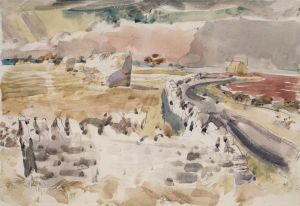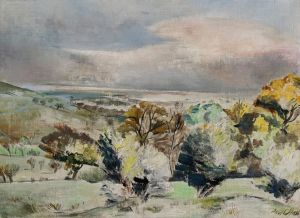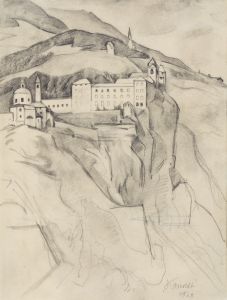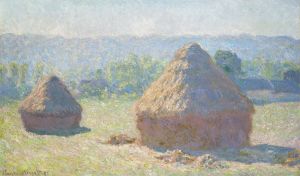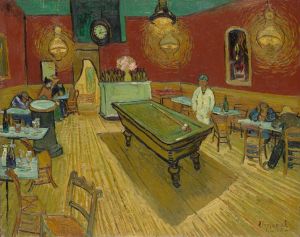
Oxenbridge Pond
A hand-painted replica of Paul Nash’s masterpiece Oxenbridge Pond, meticulously crafted by professional artists to capture the true essence of the original. Each piece is created with museum-quality canvas and rare mineral pigments, carefully painted by experienced artists with delicate brushstrokes and rich, layered colors to perfectly recreate the texture of the original artwork. Unlike machine-printed reproductions, this hand-painted version brings the painting to life, infused with the artist’s emotions and skill in every stroke. Whether for personal collection or home decoration, it instantly elevates the artistic atmosphere of any space.
Paul Nash was a prominent British artist known for his contributions to modernism and surrealism, particularly in the early to mid-20th century. His work often explored themes of landscape and nature, infused with a sense of the mystical and the abstract. One of his notable works is "Oxenbridge Pond," which exemplifies his unique approach to landscape painting.
"Oxenbridge Pond" is a painting that captures the serene yet enigmatic quality of a natural setting. Nash's interest in landscapes was not merely in their aesthetic appeal but in their ability to evoke deeper emotional and psychological responses. This painting reflects his fascination with the English countryside, a recurring subject in his oeuvre. Nash had a profound connection to the landscapes of Southern England, which often served as inspiration for his work.
The painting is characterized by its use of muted colors and a composition that draws the viewer into the scene. Nash's technique often involved a blend of realism and abstraction, allowing the viewer to recognize the scene while also engaging with its more surreal elements. In "Oxenbridge Pond," this is evident in the way the natural elements are depicted with a dreamlike quality, inviting contemplation and introspection.
Nash's work was heavily influenced by his experiences during World War I, where he served as an official war artist. The trauma and devastation he witnessed had a lasting impact on his artistic vision, leading him to explore themes of decay and renewal in nature. While "Oxenbridge Pond" does not directly depict war, the underlying tension and tranquility in the painting can be seen as a reflection of Nash's broader concerns with the cycles of destruction and regeneration.
Throughout his career, Nash was associated with various art movements and groups, including the Unit One group, which he co-founded. This group aimed to promote modernism in Britain, and Nash's work was instrumental in advancing this cause. His paintings often incorporated elements of surrealism, as seen in "Oxenbridge Pond," where the ordinary is transformed into something extraordinary through his unique vision.
"Oxenbridge Pond" is a testament to Nash's ability to convey the mystical qualities of the natural world. His landscapes are not mere representations of physical spaces but are imbued with a sense of mystery and wonder. This painting, like many of his works, encourages viewers to look beyond the surface and consider the deeper meanings and emotions that landscapes can evoke.
Paul Nash's legacy as an artist is marked by his innovative approach to landscape painting and his ability to capture the essence of the English countryside. "Oxenbridge Pond" remains an important work within his body of art, showcasing his skill in blending realism with surrealism to create evocative and thought-provoking images. Through this painting, Nash invites viewers to engage with the natural world in a way that is both reflective and transformative.







